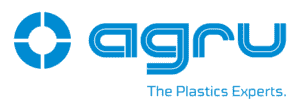Some 40 percent of the geosynthetics manufactured today are used by the mining industry, according to one estimate, and there are predictions that figure will increase as the industry continues to adopt mining technologies that help improve efficiency and protect the environment.
Jack Caldwell, an engineer at Robertson GeoConsultants, has gone as far as to say, “We believe that the innovative use of geosynthetics in mining is going to explode.” He made that prediction for Mining-Technology.com, which noted in January that geomembranes “naturally lend themselves to heap leach mining due to their impervious quality.” That story recapped the first-ever conference on geosynthetics in mining, held in Vancouver last fall.
In summarizing that conference, Caldwell noted, “The mining projects that involve the use of geosynthetics are orders of magnitude larger than any other category of projects. The challenges are greater: there are few precedents; there are no substantive regulations; and the consequences of use and misuse are greater.” Caldwell’s own challenge was sweeping: “Make continued mining possible, responsible, and profitable … .”
Heap leach facilities remain some of the world’s largest manmade structures. Critical to their design, construction and operation are liner systems that must enhance solution recovery while protecting the environment for long periods. These liners have to maximize profit at the lowest possible cost while conforming to regulations. Among the challenges they must meet:
- Heaps that can exceed 200m in height
- Extreme base pressures
- Mechanical loads from construction equipment
- Chemicals including sulphuric acid at high concentration.
“A lining system with a geomembrane by itself or a clay layer by itself is no longer the state of the art and is seldom accepted by the licensing authorities,” notes one industry paper on the topic. “Double composite liner systems are used if higher leach solution hydraulic heads are expected on top of the liner system (valley fill), to reduce the hydraulic head on the bottom geomembrane and to minimize the leakage of solution from the facility. A double liner system will be built on top of the prepared surface/foundation, and starting with the low permeable soil. On top of the low permeable soil the secondary geomembrane liner, the leak detection and recovery layer and the primary geomembrane will be placed.”
An Integrated Drainage System like Agru America’s Drain Liner has decided advantages over conventional geonets. It is installed in one layer as an integral drain with the primary or secondary liner, dramatically reducing installation time, reducing material and installation costs, lowering CQA cost, and delivering better consistency and bi-directional flow. Other benefits include:
- Higher flow rates than a conventional geonet
- Minimal reduction for creep (80% retention under 15,000 psf loading)
- Less impact by chemical/biological clogging
- Faster response time for leak detection
- Studs totally integrated with the liner-single production process
- Excellent fluid barrier.
Agru America’s structured geomembranes are manufactured on state-of-the-art manufacturing equipment using a flat cast extrusion manufacturing process that results in a consistent core thickness. That leads to higher tensile strength and puncture values than traditional textured materials. It also gives consistent structuring as the material production rollers are embossed with the appropriate pattern for the structured liner requirements. This results in higher flow rates and consistent drain capacity.
The in-plane drainage capacity of the Drain Liner used as either a primary or secondary liner is always higher than a conventional geonet due to the structure of the studs and stud spacing which results in a more laminar (less turbulent) flow and a constant bi-directional flow over time, with minimal reduction due to creep.
Innovation in Mining.
Jack Caldwell mentioned these innovations while recounting speakers at a recent conference. “Then there was Clark West of Agru America who told of high quality, high strength geomembranes of amazing roughness. Can you really put his products on slopes as steep as 1.4:1.0? Feeling the roughness of his products, I am tempted to try on a project that is bedeviling me right now.It is great to see geomembranes being made in the USA … .”
